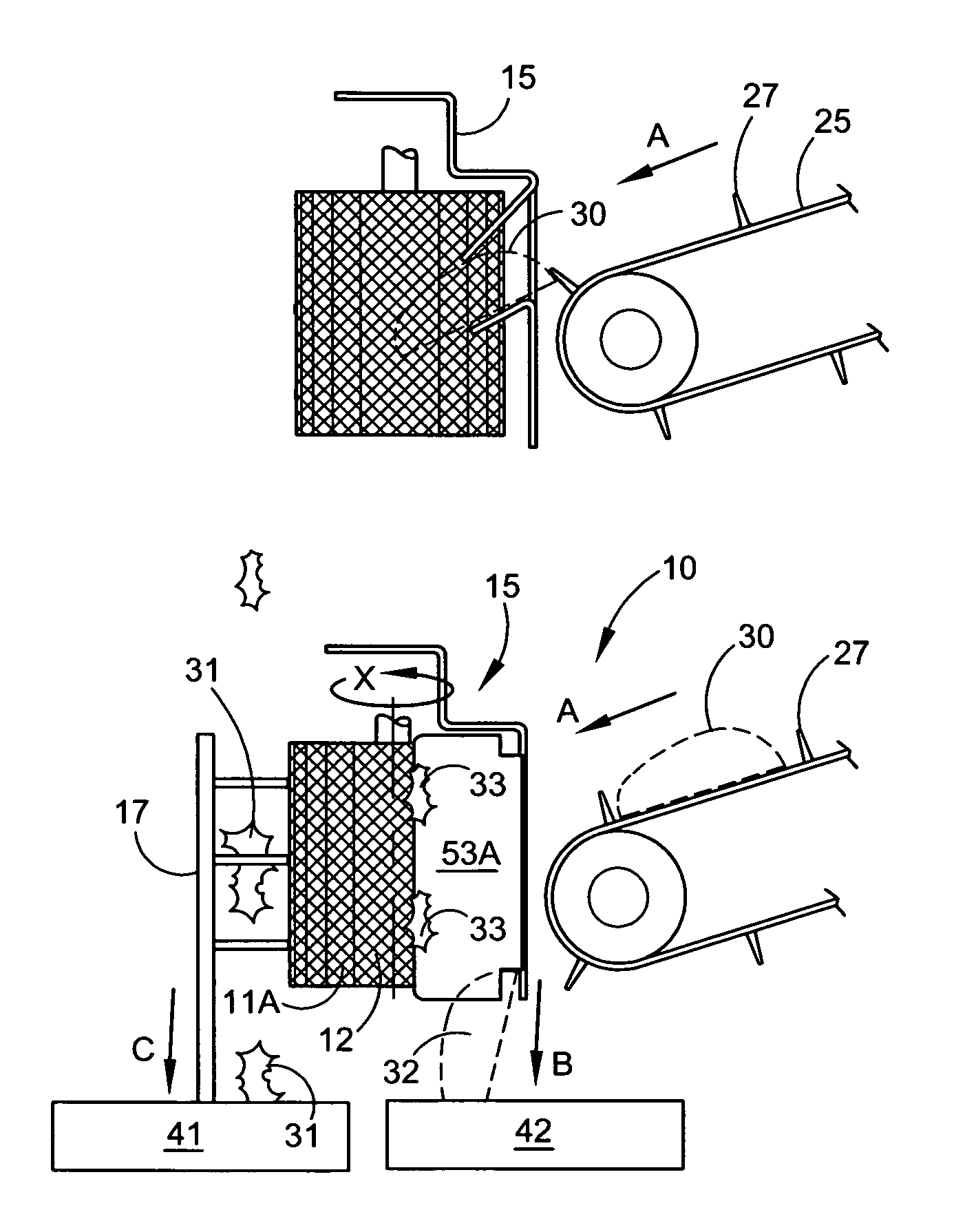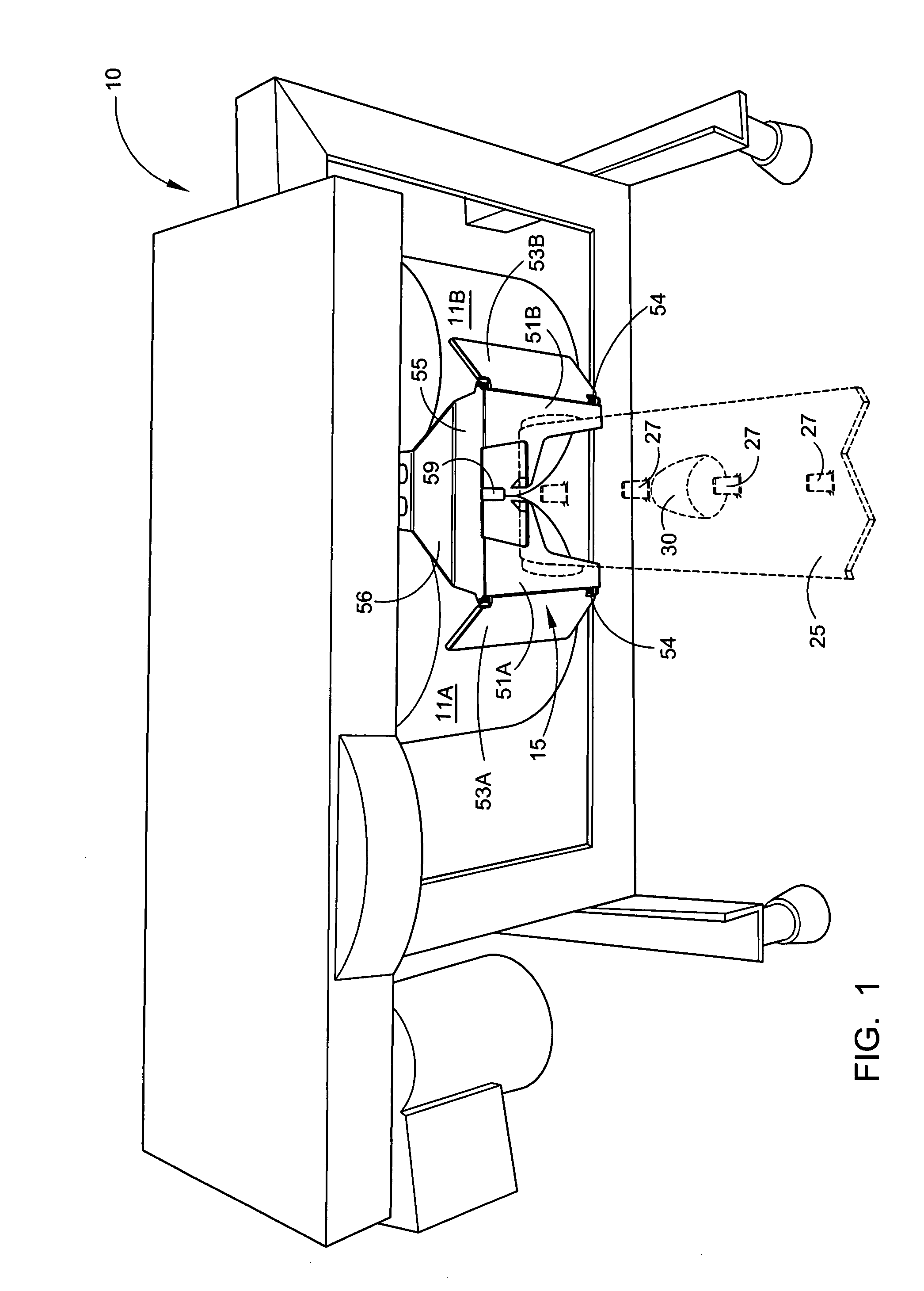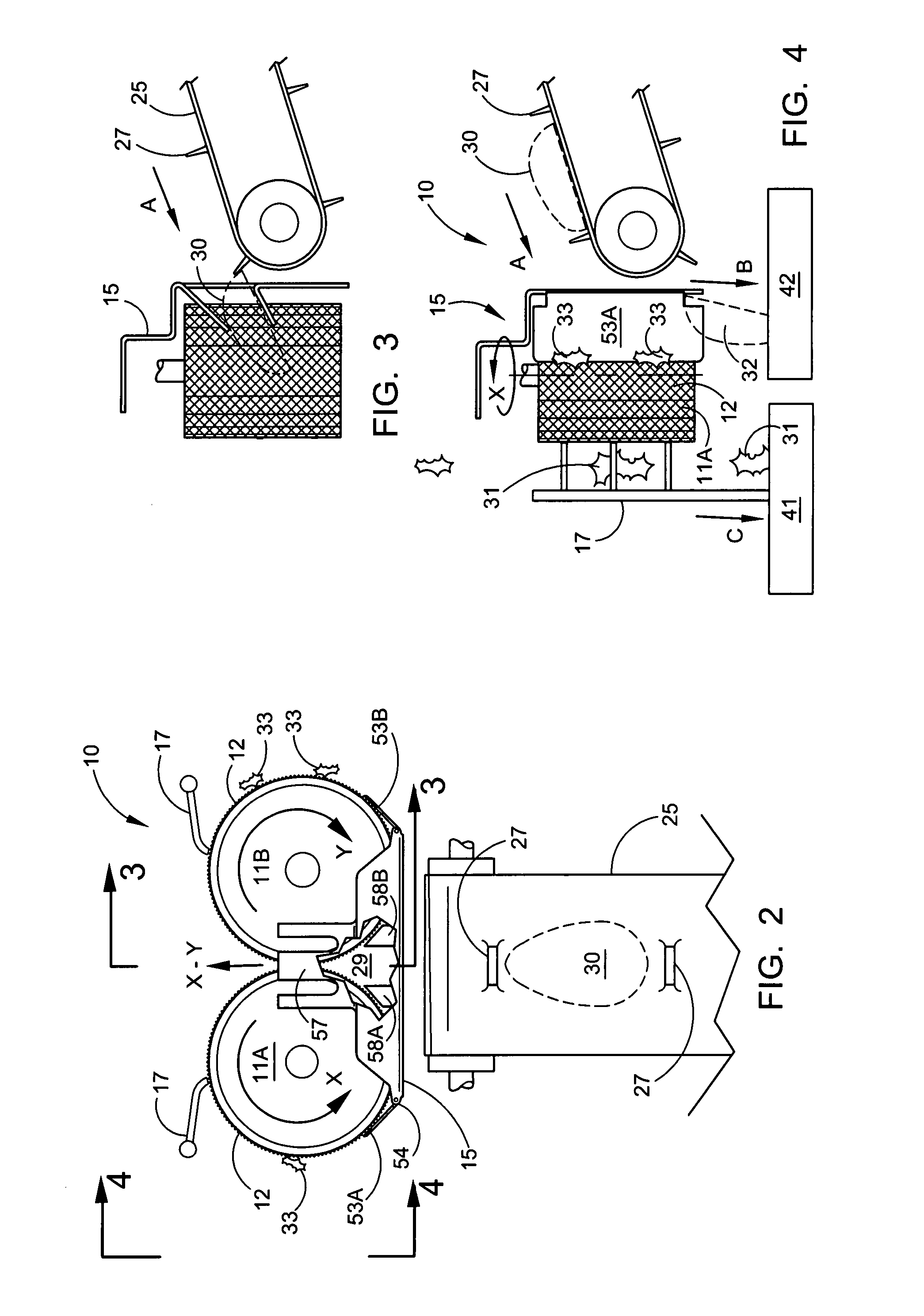Avocado de-skinning apparatus
a technology for de-skinning and avocados, which is applied in the field of avocado de-skinning apparatus, can solve the problems of not being nutritionally sound, subject to the greatest heat exposure, nutritional loss and flavor loss, and not being as efficient as desired,
- Summary
- Abstract
- Description
- Claims
- Application Information
AI Technical Summary
Benefits of technology
Problems solved by technology
Method used
Image
Examples
Embodiment Construction
[0023]Referring now to the drawings in detail and in particular to FIGS. 1 and 2, reference character 10 generally designates an avocado de-skinning apparatus constructed in accordance with a preferred embodiment of the presently described apparatus. Two upstanding, generally vertically disposed, drums 11A, 11B are adjacent to one another but do not touch. A gap 29 is formed at their point of adjacency. The drums 11A, 11B are rotated in tandem in the directions of Arrows X, Y, respectively.
[0024]A conveyer belt 25 with upstanding fins 27 retain and guide an avocado 30 to the apparatus 10 and into the guide plate 15. An avocado sits between two fins 27. For the purpose of discussion, the fin at the front of the avocado is the leading fin and the fin at the rear of the avocado is the trailing fin. The trailing fin pushes the avocado into the guide plate 15 and to the drums 11A, 11B which have a triangular-like opening or gap 29. Once forced into the gap 29 and the rotating drums 11A, ...
PUM
 Login to View More
Login to View More Abstract
Description
Claims
Application Information
 Login to View More
Login to View More - R&D
- Intellectual Property
- Life Sciences
- Materials
- Tech Scout
- Unparalleled Data Quality
- Higher Quality Content
- 60% Fewer Hallucinations
Browse by: Latest US Patents, China's latest patents, Technical Efficacy Thesaurus, Application Domain, Technology Topic, Popular Technical Reports.
© 2025 PatSnap. All rights reserved.Legal|Privacy policy|Modern Slavery Act Transparency Statement|Sitemap|About US| Contact US: help@patsnap.com



